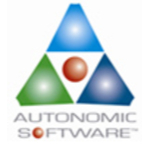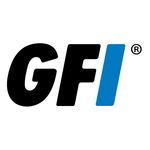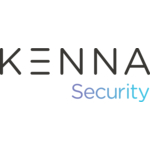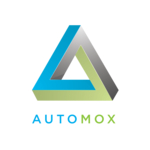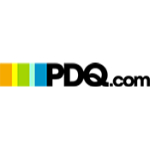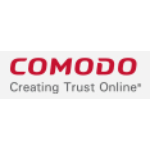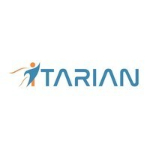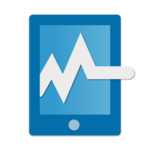
TechnologyCounter provides genuine, unbiased real user reviews to help buyers make informed decisions. We may earn a referral fee when you purchase through our links, at no extra cost to you.
List of 15 Best Patch Management Software
Showing 1 - 15 of 21 products
ManageEngine Patch Manager Plus
Software by Zoho Corporation Pvt. Ltd.
ManageEngine Patch Manager Plus is an all-around patching solution, offering automated patch deployment for Windows, macOS, and Linux endpoints, along with patching support for 850+ third party applications...Read ManageEngine Patch Manager Plus Reviews
Atera is a software designed for modern businesses. With its intuitive interface and powerful features, Atera simplifies IT management and boosts productivity. Its innovative technology streamlines tasks, improves response time, and reduces downtime...Read Atera Reviews
ANSA is a software that is transforming the way we approach complex processes. With a powerful set of tools and an intuitive interface, ANSA streamlines tasks and enhances efficiency like never before. Harness the power of ANSA and see the difference...Read ANSA Reviews
GFI LanGuard is a highly efficient software that helps businesses enhance their network security by providing in-depth information about vulnerabilities, missing patches, and potential threats. This powerful tool equips IT teams with the necessary kn...Read GFI LanGuard Reviews
SnaPatch is a software solution for seamless is a patching. With its user-friendly interface features, SnaPatch simplifies the process of updating and securing your system. Say goodbye to manual patching and hello to hassle-free maintenance with SnaP...Read SnaPatch Reviews
Kenna is a software designed to simplify and streamline your daily tasks. With an intuitive interface and powerful features, Kenna is the perfect solution for professionals looking to maximize their productivity. Say goodbye to complicated processes...Read Kenna Reviews
Automox is a solution for effortless is a computer management. With its seamless automation capabilities and user-friendly interface, Automox streamlines the process of patching, configuring, and securing devices. Say goodbye to manual updates and vu...Read Automox Reviews
PDQ Deploy is a software that allows you to efficiently deploy patches, updates, and applications to multiple computers simultaneously, saving you time and effort. With its user-friendly interface features, PDQ Deploy streamlines the deployment proce...Read PDQ Deploy Reviews
Comodo is a leading software company known for providing advanced cyber security solutions to individuals and businesses alike. Its innovative approach and top-notch technology have made it a trusted name in the industry, helping millions of users ke...Read Comodo Reviews
Panda is a highly innovative and user-friendly software that aims to revolutionize the way businesses manage their data. With a sleek interface features, Panda simplifies data analysis and allows for seamless collaboration among team members. Say goo...Read Panda Reviews
ITarian, the all-in-one IT management platform, simplifies and streamlines the way businesses handle their IT operations. With its user-friendly interface and robust features, ITarian empowers organizations to efficiently manage their network, device...Read ITarian Reviews
Kaseya VSA is a solution for managing and automating IT systems. With a suite of features designed to increase efficiency, streamline operations, and enhance security, Kaseya VSA is the go-to choice for businesses of all sizes. Keep your systems runn...Read Kaseya VSA Reviews
Pulseway is a remote monitoring and management solution designed to simplify IT management for businesses of all sizes. With its user-friendly interface and real-time notifications, managing systems and networks has never been easier. Stay on top of...Read Pulseway Reviews
SanerNow PM is a project management software that streamlines your teams workflow and boosts productivity. Designed with simplicity and efficiency in mind, SanerNow PM is a tool for organizing and managing projects of any size. Let SanerNow PM take y...Read SanerNow PM Reviews
NinjaOne the ultimate software solution for streamlining your daily tasks and boosting productivity. With its user-friendly interface features, NinjaOne simplifies your workflow and empowers you to achieve more in less time. Say goodbye to cluttered...Read NinjaOne Reviews
- What Is Patch Management Software?
- Top Reasons Why Businesses Need Patch Management Software?
- What Are the Top Key Features of Patch Management Software?
- What Are the Top Benefits of Patch Management Software?
- What Are the Steps to Choose the Right Patch Management Software?
- What Are the Types of Patch Management Software for Different Industries?
- What Are the Technology Trends for Best Patch Management Software?
- What Are the Deployment Options for Patch Management Software?
What Is Patch Management Software?
Patch management software is a software application designed to assist enterprises in maintaining up-to-date computer systems by implementing the most recent security patches.
The primary purpose of implementing this system is to ensure the security of all computers within a business, safeguarding them against potential threats such as malicious assaults and other security vulnerabilities.
Top patch management software typically assists in the identification of potential security concerns, facilitates the downloading and installation of patches, and notifies system administrators regarding the availability of new patches.
Additionally, it has the capability to rapidly and effectively distribute fixes to several PCs. Regular updates are essential for maintaining the security of patch management system. This guarantees that the software remains abreast of the continuously growing security threat landscape and possesses the capability to promptly identify and address emerging vulnerabilities.
The best patch management software can further serve the purpose of identifying and overseeing vulnerabilities within the systems and networks of a business. The regular surveillance of vulnerabilities and weaknesses is necessary in order to sustain a secure environment.
Patch management is an integral component of maintaining security, necessitating that enterprises diligently uphold the practice of regularly updating all systems. The execution of this job can present challenges and consume a significant amount of time in the absence of patch management tools.
Patch management tools is a valuable tool for organizations as it enables them to effectively and efficiently maintain the currency of their security measures. By promptly installing the latest security patches and addressing emerging security risks, this software minimizes the necessity for labor-intensive manual patching and other security-related tasks.
Consequently, organizations may save both time and financial resources through the utilization of patch management system.
Top Reasons Why Businesses Need Patch Management Software?
1. Automates patch deployment and testing: Patch management software enables IT teams to automate the deployment and testing of security patches and updates, which helps to ensure that systems are secure and up-to-date.
2. Reduces IT resource costs: Automated patch management helps to reduce the time and cost associated with manual patching processes.
3. Streamlined patch testing and roll-outs: By automatically testing and deploying patches, patch management system simplifies the patch management process and eliminates the need for manual patch testing and roll-outs.
4. Improved vulnerability identification: The best patch management software scans systems for software vulnerabilities in order to identify and fix security holes before they can be exploited.
5. Lower security risk: Patch management tools help to reduce security risks as it ensures that systems are kept up-to-date with the latest patches to protect against known exploits.
6. Enhanced compliance: By automating patch deployment, cloud patch management software can help ensure compliance with industry security regulations and standards.
7. Improved network performance: By keeping systems up-to-date with the latest patches, patch management system helps to optimize system performance and increase productivity.
8. Centralized management: With top patch management software, IT teams can manage and distribute patches throughout the entire network from a single, central location.
9. Reduced server downtime: Automated patch management software helps to reduce server downtime as it ensures that critical patches are deployed quickly and efficiently.
10. Easy to use: Patch management software is typically user-friendly, making it easier to manage and deploy patches.
11. Increased scalability: By automating the patch management process, cloud patch management software can scale up easily to accommodate an increasing number of IT systems.
12. Automate notifications: Notifications can be easily automated and sent out to alert staff of newly available patches.
13. Timely patch deployment: Patch management tools makes it easier to deploy patches quickly and ensures that systems are secure and up-to-date.
14. Comprehensive reports: Most patch management systems will generate comprehensive reports that allow IT teams to gain visibility into the patch management process.
15. Flexible scheduling: The best patch management software allows IT staff to schedule patch deployment based on their needs and preferences.
What Are the Top Key Features of Patch Management Software?
1. Automated Detection and Deployment: Patch management software plays a crucial role in identifying and facilitating the automatic deployment of security patches, hence ensuring the perpetual up-to-dateness of an organization's systems.
2. Configuration Management: The patch management system facilitates users in identifying, monitoring, and upgrading the software installed on their various devices, thereby assuring the implementation of all essential fixes.
3. Third-Party Applications: Top patch management software has the capability to offer diverse levels of assistance for third-party apps, which are typically not included in the standard package of operating systems.
4. Security Assessment: The cloud patch management software has the capability to conduct periodic evaluations of the security status of a specific system or network, ensuring that all essential security patches and upgrades are implemented.
5. Change Management: By utilizing a patch management system, organizations can automate change management operations to guarantee uniformity of software package versions across all users.
6. Compliance Reporting: The system enables users to generate a comprehensive report containing information about their patches, software versions, and other configurations. This report serves the purpose of demonstrating adherence to diverse security laws and regulations.
7. Inventory Management: The best patch management software possesses the capability to monitor and record the inventory of both hardware and software, encompassing the constituent elements and components that constitute each system or software installation.
8. Logging and Monitoring: The patch management system encompasses a range of logging and monitoring features that enable users to effectively observe and record significant occurrences occurring within their systems.
What Are the Top Benefits of Patch Management Software?
The top benefits of patch management software are:
1. Increased system security: The act of patching apps and operating systems can effectively mitigate the potential risks associated with cyberattacks and data breaches by effectively addressing vulnerabilities and closing existing security gaps.
2. Automation: Automation plays a pivotal role in diminishing the time and exertion needed for the manual discovery and implementation of patches, hence enabling IT staff to allocate their attention towards alternative tasks.
3. Improved system reliability and performance: The process of patching is essential for maintaining the currency of applications, thereby enhancing the dependability and efficiency of the system, while also mitigating potential vulnerabilities.
4. Cost savings: The implementation of automated patch management systems has the potential to yield cost savings in terms of hardware and IT manpower expenditures, since it mitigates the need for extensive manual labor.
5. Improved compliance: Automated patch management facilitates the adherence to regulatory compliance for IT teams by assuring the comprehensive application of all necessary fixes.
6. Enhanced data management: Automated patch management can additionally enhance the data management capabilities of IT teams, facilitating efficient monitoring of software update deployment, including the precise timing and location of such updates.
What Are the Steps to Choose the Right Patch Management Software?
1. Identify the needs and wants of your organization: The initial stage in the selection of patch management software is determining the most appropriate system that aligns with the specific requirements and preferences of the organization. It is imperative to evaluate the hardware and software infrastructure in use, ascertain the requisite patches for deployment, and prioritize the essential patch management duties.
2. Compare software features: After discerning the requirements and desires of your firm, top patch management software is advisable to do a comparative analysis of the attributes of various cloud patch management software solutions in order to determine the most suitable option that aligns with your established criteria.
This encompasses an examination of the user interface and the available customization options, as well as an evaluation of the deployment and scheduling capabilities. Additionally, best patch management tools involves an assessment of supplementary functionalities, such as automatic reporting and the provision of thorough inventory for the system.
3. Research user reviews: In addition to doing feature comparisons, it is advisable to engage in research of user evaluations as a means of acquiring valuable insights pertaining to the dependability of a specific the best patch management software. This will assist individuals in making a well-informed decision and selecting a system that possesses qualities of simplicity, security, and reliability.
4. Evaluate cost: After the process of narrowing down the viable patch management systems, it is advisable to proceed with evaluating the associated costs. It is important to consider the possibility of incurring supplementary costs, such as setup fees or license fees. Conduct a comprehensive analysis of the cost and features of each system in order to determine the optimal value proposition.
5. Schedule a demo: After selecting the best patch management software system, it is advisable to arrange a demonstration session with the service provider. This would enable users to ascertain the provision of comprehensive responses to their inquiries and verify the user-friendliness of the system. Additionally, it will provide you with an opportunity to test the system prior to making a definitive purchasing determination.
What Are the Types of Patch Management Software for Different Industries?
There is a variety of patch management software designed to suit different industries, each offering different levels of security.
1. For healthcare and medical organizations: Potential solutions could involve the utilization of patch management software that adheres to the regulations outlined in the Health Insurance Portability and Accountability Act (HIPAA). This program is responsible for monitoring and ensuring the implementation of necessary updates to IT systems that are vital for maintaining patient safety and ensuring the smooth functioning of operations. Additionally, it has the capability to provide a comprehensive overview of the extent to which a system adheres to defined policies.
2. For finance, banking and accounting: The implementation of secure patch management solutions plays a crucial role in safeguarding sensitive data against unauthorized access and theft. The implementation of a resilient patch management tools involves the continuous monitoring of system events and the establishment of automated rule-based protocols to effectively update and secure client networks. Additionally, it offers protective measures to guarantee comprehensive patching and identify systems that are not up to date.
3. For manufacturing and industrial: Automation plays a crucial role in the sector, with patch management solutions providing automated patching for servers, computer systems, and IT assets. The purpose of these solutions is to assist enterprises in achieving cost and time savings through the implementation of effective patching strategies.
4. For retail: The preservation of security holds utmost importance in the retail industry, and the utilization of patch management software may effectively safeguard the privacy of clients, hence maintaining the security of their data across all levels. Solutions offer expeditious resolution of security concerns and the capacity to promptly implement updates to applications and systems, resulting in time savings and cost reduction.
5. For governments: In order to adhere to rigorous compliance standards, patch management solutions designed for government entities must offer robust security measures and ensure the protection of sensitive information at an enterprise level. In order to safeguard sensitive government data from potential risks, it is imperative that solutions adhere to stringent security protocols.
What Are the Technology Trends for Best Patch Management Software?
In recent years, The current technology advancements in the field of patch management software have exhibited a growing emphasis on automation and integration, with the primary objective of enhancing operational efficiency and mitigating potential risks.
Automated patch management software streamlines the task of overseeing software updates across many platforms and devices, including capabilities to facilitate the deployment, assessment, validation, and scheduling of updates. In addition to system examination for weaknesses and identification of essential patches and remediation actions, the inclusion of security scan and vulnerability analysis tools is also feasible.
Moreover, the integration of best patch management tools with other IT processes, such as antivirus and malware solutions, as well as IT asset tracking, can contribute to the establishment of a more comprehensive and holistic security solution.
The utilization of cloud-based patch management systems has experienced a notable surge in popularity due to its ability to facilitate patch administration from any location and minimize IT expenses.
What Are the Deployment Options for Patch Management Software?
1. On-premise Deployment: The deployment of best patch management tools onto a customer's server can be accomplished by utilizing local storage. This approach necessitates no reliance on external hosting services and affords customers complete autonomy in managing the patching procedure.
2. Cloud-based Deployment: The deployment of cloud patch management software in a cloud-based environment, facilitated by a third-party provider, is also a viable option. This deployment method offers customers a heightened level of scalability and flexibility in order to effectively address their patching requirements.
3. Hybrid Deployment: The deployment strategy for patch management tools integrates both on-premise and cloud-based alternatives. The system provides users with the choice to utilize either the on-premise alternative, which is suitable for handling sensitive data, or the cloud-based version, which offers enhanced scalability and flexibility.

